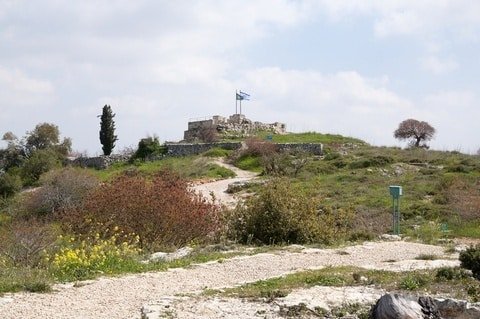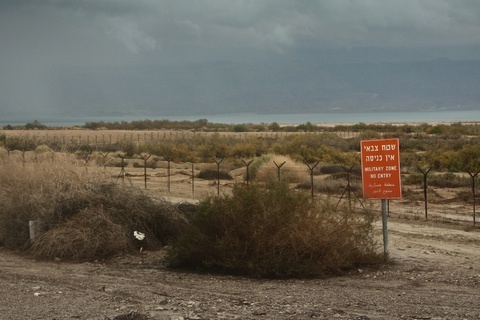The 1967 Arab-Israeli war, also known as The Six-Day War, was waged between Israel and the Arab states of Egypt, Jordan, and Syria with troops and arms from Iraq, Saudi Arabia, Kuwait, and Algeria.
From the establishment of the State, Israel’s leaders had been expressing a desire for peace negotiations to begin with all its neighbors. However, the surrounding Arab States were at no stage ready to reach any peace agreement, and in fact, all overtures were met with rhetoric that made it clear that their stated goals were to eradicate the Zionist State. As a result, during the early part of the ’60s, Israel faced constant border attacks, especially from Jordan and Lebanon, and shelling of Israeli Kibbutzim and Moshavim in the Galilee from Syrian positions on the Golan Heights.
This led to tension along the borders, which gradually escalated. In 1965 there were 35 terrorist attacks mounted against Israel which increased to 41 in 1966 and 37 attacks in the first four months of 1967.
In April 1967, Israeli kibbutzim in the Hula Valley were shelled heavily from Syria. This resulted in Israeli fighter planes bombing targets in Syria and 6 Syrian MiG fighter planes being destroyed during the dogfights. Two of these fighter planes were hit in full view of thousands of Syrians on the outskirts of Damascus.
In May 1967, Nasser, President of Egypt, began massing troops in the Sinai, 130,000 fighters, and he informed the Egyptian public that the time had been reached to destroy Israel. On May 18th Nasser ordered the withdrawal of the U.N. Emergency force from Sinai, and on May 23rd, he once again closed the Straits of Tiran to Israeli shipping. During this time, the world was indifferent to the actions taking place, and the United Nations warned Israel not to take unilateral action.
There was pressure from the U.S and the U.S.S.R. on Israel not to act, and France put an arms embargo on the Middle East, which effectively meant no arms for Israel. During this time, Israel began mobilizing reserves, and the situation caused Levi Eshkol, the Prime Minister, to establish a unity government, and Moshe Dayan was appointed Minister of Defense.
On June 5th, 1967, at7.45 a.m, Israeli planes attacked Egyptian Air Bases in two separate waves, and by9.45 a.m, the Egyptian Air Force was effectively destroyed with 304 of their 419 planes taken out.
Syrian, Jordanian, and Iraqi planes immediately retaliated, but their plans failed as they missed most of their intended targets. This led to The Israeli Air Force attacking the Syrian and Jordanian air forces and bringing down the entire force of 82 Jordanian planes and 53 Syrian planes out of their total of 112. By this action, Israel was in complete control of the skies.
One hour after the first Air Strike, columns of Israeli tanks began their advance into Sinai on the Egyptian front. Within five days, the destruction of the Egyptian army was complete and Israeli forces were in control of the banks of the Suez Canal.
At11.45 a.m.m on the first day of the war, Jordanian forces began firing on Israel starting in Jerusalem and following that, across the entire length of the armistice lines between Jordan and Israel. Israel had pleaded with King Hussein to desist from taking part in the war, a plea which he failed to heed. Nevertheless, it took Israel only two days to overcome the Jordanian forces and take control of the West Bank of the Jordan River.
After seeing what was happening on the ground, the Syrians decided to minimize their part in the war and only sent four tanks into Israel. One of these overturned, a second fell into the Banias river canyon, and a third caught fire. The fourth tank made a hasty withdrawal.
As the scale of the Israeli victory became apparent, the residents of the Hula Valley and those of the Jordan Valley began to lobby the Prime Minister to finally rid their lives of the constant shelling by Syria, by taking control of the Golan Heights. Finally, on June 9th, Israeli forces broke through Syrian defenses and realized their objective. The Golan Heights were in Israeli hands. By this stage, Israel was in a position to reach Amman, Cairo, and Damascus, but as the primary objective had been to take control of the Golan Heights and the Sinai for security reasons, there was no need to continue.
After the Six-Day War, a further set of cease-fire agreements were reached between Israel and its neighbors which were to be enforced by the United Nations. At this stage, the Israeli Government declared that in return for signed peace agreements with the Arab States, Israel would be ready to withdraw to the international borders.
The response was a resonant resolution that rejected the offer from Israel. The resolution stated as follows “No peace with Israel; no recognition of Israel; no negotiations with Israel.”



